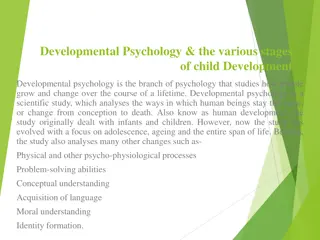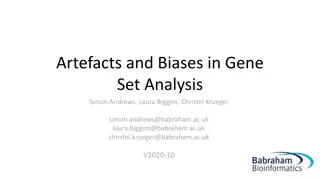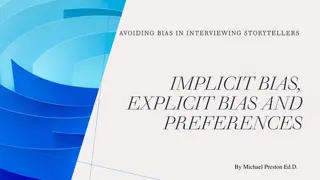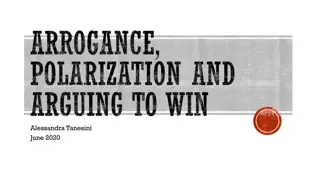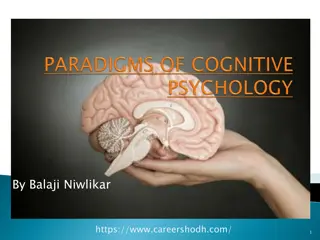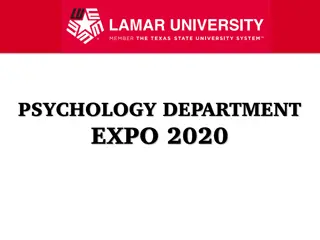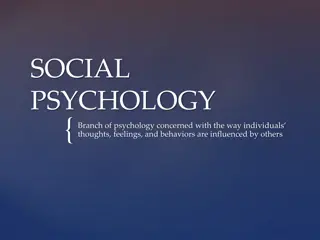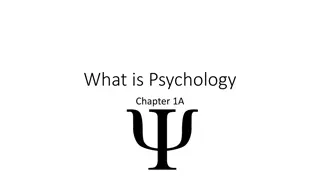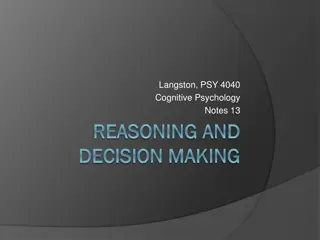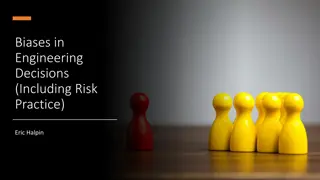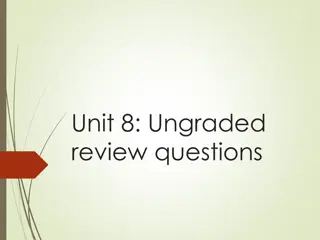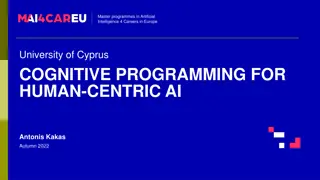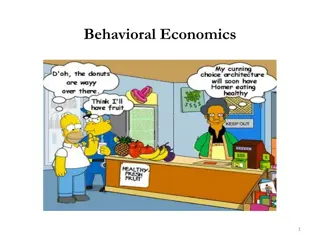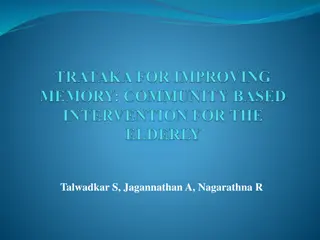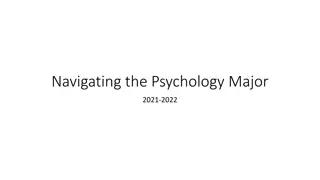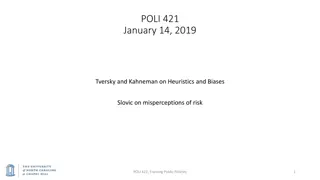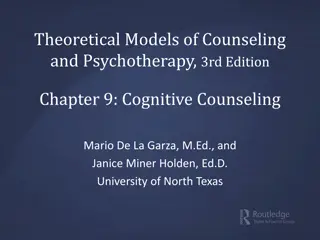Cognitive Biases and Decision Making: An Exploration of Human Psychology
Explore the fascinating realm of cognitive biases and decision-making through various mind-bending puzzles and scenarios. Dive into concepts such as fast and slow thinking, logical reasoning, and the impact of biases on our everyday choices. Challenge your cognitive reflection with intriguing questions and examine thought-provoking illusions. Delve into the psychology of individual behavior, societal perceptions, and statistical anomalies. Gain insights into how our minds work and the intricate interplay between intuition and rationale.
Uploaded on Sep 15, 2024 | 0 Views
Download Presentation

Please find below an Image/Link to download the presentation.
The content on the website is provided AS IS for your information and personal use only. It may not be sold, licensed, or shared on other websites without obtaining consent from the author. Download presentation by click this link. If you encounter any issues during the download, it is possible that the publisher has removed the file from their server.
E N D
Presentation Transcript
Bonus lecture: Thinking Fast and Slow Human Language Technologies Universit di Pisa
Thinking Fast and Slow By Daniel Kanheman: https://www.slideshare.net/rashmiparmar1291/daniel-kanheman-thinking- fast-and-slow
Biblical illusion How many animals of each kind did Moses take into the ark?
Lazy System 2 A bat and ball cost $1.10. The bat costs one dollar more than the ball. How much does the ball cost? All roses are flowers. Some flowers fade quickly. Therefore some roses fade quickly.
Cognitive Reflection Test If it takes 5 machines 5 minutes to make 5 widgets, how long would it take 100 machines to make 100 widgets? In a lake, there is a patch of lily pads. Every day, the patch doubles in size. If it takes 48 days for the patch to cover the entire lake, how long would it take for the patch to cover half of the lake?
Linda: Less is More Linda is thirty-one years old, single, outspoken, and very bright. She majored in philosophy. As a student, she was deeply concerned with issues of discrimination and social justice, and also participated in antinuclear demonstrations. Which is most likely? Linda is a teacher in elementary school. Linda works in a bookstore and takes yoga classes. Linda is active in the feminist movement. Linda is a bank teller. Linda is an insurance salesperson.
Bias An individual has been described by a neighbor as follows: Steve is very shy and withdrawn, invariably helpful but with little interest in people or in the world of reality. A meek and tidy soul, he has a need for order and structure and stre, and a passion for detail. Is Steve more likely to be a librarian or a farmer? Answer: farmer since there are more of them than librarians
The Law of Small Numbers A study of the incidence of kidney cancer in the 3,141 counties of the USA reveals a remarkable pattern. The counties in which the incidence of kidney cancer is lowest are mostly rural, sparsely populated, and located in traditionally Republican states in the Midwest, the South, and the West. What do you make of this?
Reaction Your mind has been very active in the last few seconds, and it was mainly a System 2 operation. You deliberately searched memory and formulated hypotheses. Some effort was involved; your pupils dilated, and your heart rate increased measurably. But System 1 was not idle: the operation of System 2 depended on the facts and suggestions retrieved from associative memory. You probably rejected the idea that Republican politics provide protection against kidney cancer. Very likely, you ended up focusing on the fact that the counties with low incidence of cancer are mostly rural. Comment: It is both easy and tempting to infer that their low cancer rates are directly due to the clean living of the rural lifestyle no air pollution, no water pollution, access to fresh food without additives. This makes perfect sense.
However Now consider the counties in which the incidence of kidney cancer is highest. These ailing counties tend to be mostly rural, sparsely populated, and located in traditionally Republican states in the Midwest, the South, and the West. Comment: It is easy to infer that their high cancer rates might be directly due to the poverty of the rural lifestyle no access to good medical care, a high-fat diet, and too much alcohol, too much tobacco.
Statistics is hard Something is wrong, of course. The rural lifestyle cannot explain both very high and very low incidence of kidney cancer. The key factor is not that the counties were rural or predominantly Republican. It is that rural counties have small populations. And the main lesson to be learned is not about epidemiology, it is about the difficult relationship between our mind and statistics.
Causes Trump Statistics A cab was involved in a hit-and-run accident at night. Two cab companies, the Green and the Blue, operate in the city. You are given the following data: 85% of the cabs in the city are Green and 15% are Blue. A witness identified the cab as Blue. The court tested the reliability of the witness under the circumstances that existed on the night of the accident and concluded that the witness correctly identified each one of the two colors 80% of the time and failed 20% of the time. What is the probability that the cab involved in the accident was Blue rather than Green? Standard problem of Bayesian inference P(WitBlue) = P(Blue)P(WitBlue|Blue) + P(Green)P(WitBlue|Green) = 0.15 0,80 + 0,85 0,20 = 0,29 ? ???? ??????? =? ??????? ???? ?(????) ?(???????) =0,8 0,15 0.29 = 0,41
Causal Stereotypes A cab was involved in a hit-and-run accident at night. Two cab companies, the Green and the Blue, operate in the city. You are given the following data: The two companies operate the same number of cabs, but Green cabs are involved in 85% of accidents. A witness identified the cab as Blue. The court tested the reliability of the witness under the circumstances that existed on the night of the accident and concluded that the witness correctly identified each one of the two colors 80% of the time and failed 20% of the time. What is the probability that the cab involved in the accident was Blue rather than Green? Answer: The chances for the two colors are about equal (the Bayesian estimate is 41%)
Further Reflections How this may affect our life and hanits: Thinking Fast, Thinking slow: how our brain makes decisions https://www.slideshare.net/popart/thinking-fast-and-slow-how-your- brain-makes-decisions



